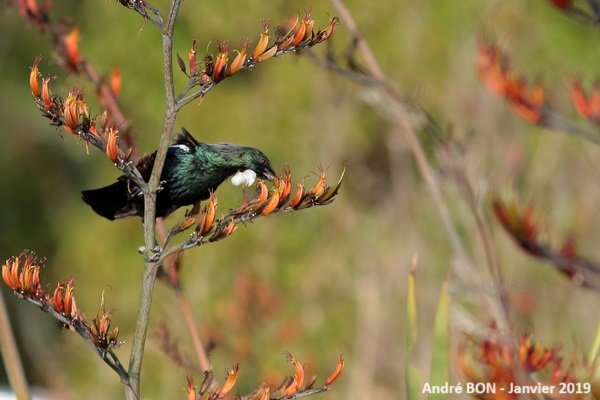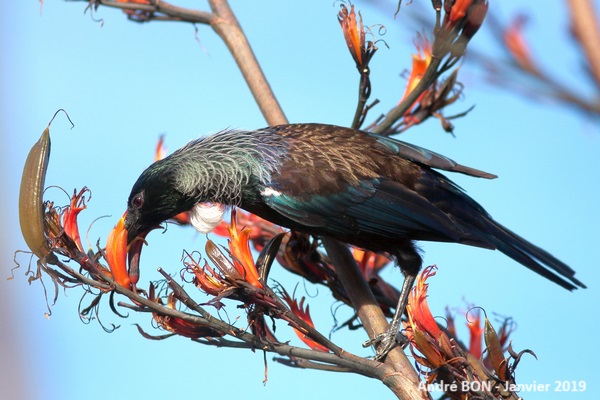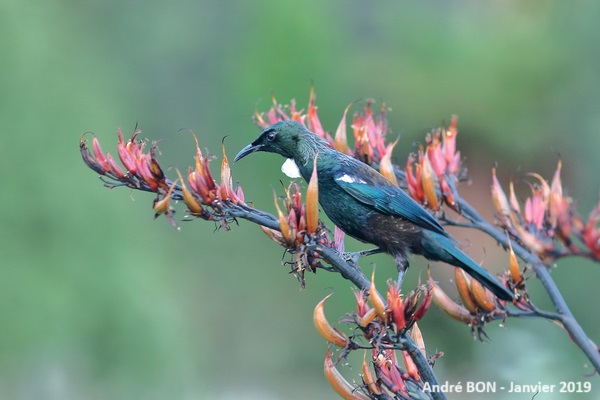



| Tui (Prosthemadera novaeseelandiae (Gmelin, 1788)) |




|
|
Scientific name: Prosthemadera novaeseelandiae (Gmelin, 1788) Common name: Tui Other names: Parson Bird French name: Méliphage tui, Tui cravate-frisée. Order: Passeriformes Family: Meliphagidae Size: Body size: 27 to 32 cm; Weight: 58 to 150 g. Males are slightly larger than females. Habitat: Native forests, plantations, parks and gardens with a preference for places rich in nectar-producing plants such as New Zealand Flax (Phormium tenax). Food: Mainly nectar supplemented by fruits, insects, seeds and pollen depending on seasonal availability. Nesting: The nest is a large, rudimentary cup located in a tree or bush. There are usually 2 to 5 eggs per clutch. Migration: Sedentary, it can however move locally depending on the seasons and food availability. Geographic area: Endemic to New Zealand and surrounding islands. The Chatham Islands are home to a subspecies characterized by a larger size, Prosthemadera novaeseelandiae chathamensis. |
The Tui is as well known for its varied and melodious song as for its beautiful plumage. The head, wings and tail are shiny black with, depending on the angle of view, green and blue sheens. The sides and upper back are dark brown with bronze-green highlights. The lower belly and thighs are dark yellowish brown. There is a small white spot on the shoulders. However, the most striking characteristic is the presence of two small tufts of curly white feathers on the sides of the throat. There are also long filamentous white feathers on the back of the neck. The bill is black and slightly curved downwards. The eyes are dark brown. The legs are black. Both sexes are similar. Juveniles are duller. The melodious song varies from one individual to another. The Tui also imitates the songs of other birds and is able of reproducing the human voice. |
| [To know more about the Tui] [Next picture] [Top] |

|
I heard a lot the Tui song before seeing it. It is easy to recognize with its two small tufts of white feathers on its throat. |
| [To know more about the Tui] [Next picture] [Previous picture] [Top] |

|
This is the season when there is a lot of nectar. I mainly observed Tui busy feasting on it. |
| [To know more about the Tui] [Next picture] [Previous picture] [Top] |

|
This close-up view clearly shows the long filamentous white feathers located on the back of the neck. |
| [To know more about the Tui] [Previous picture] [Top] |

|
I think all my photos show the Tui on New Zealand Flax (Phormium tenax). |